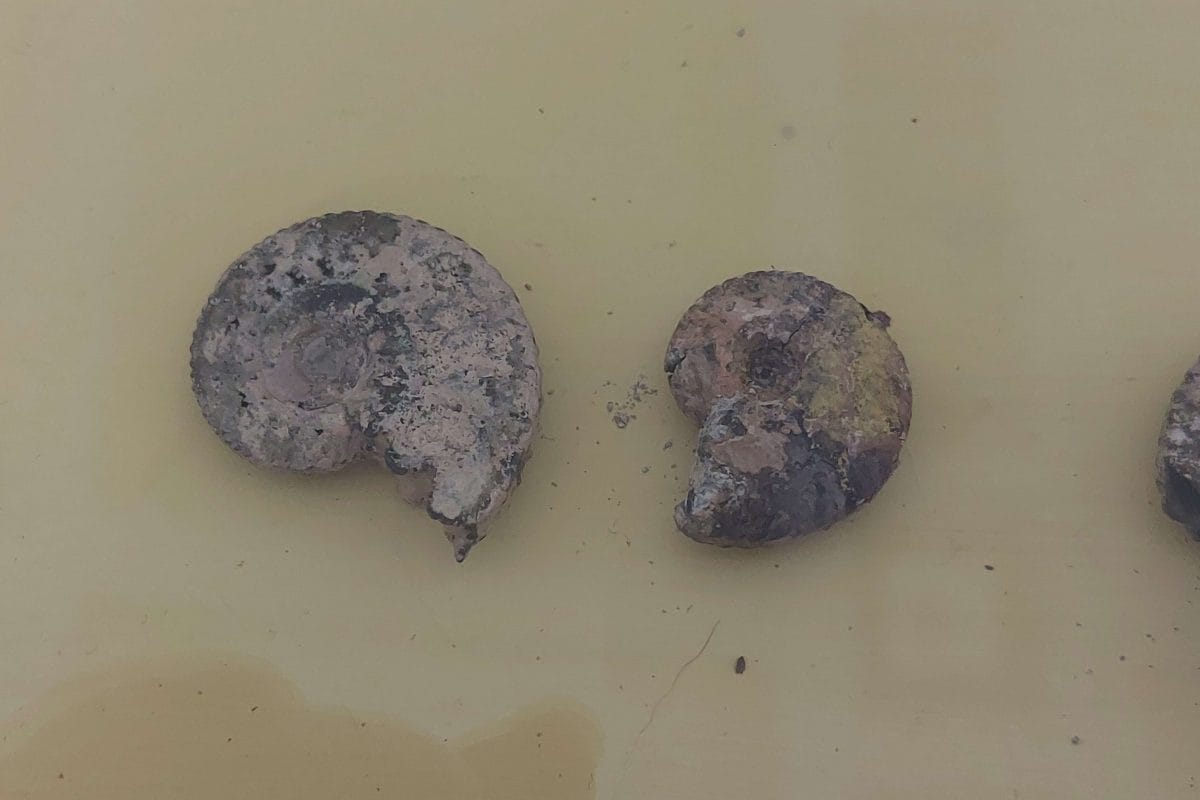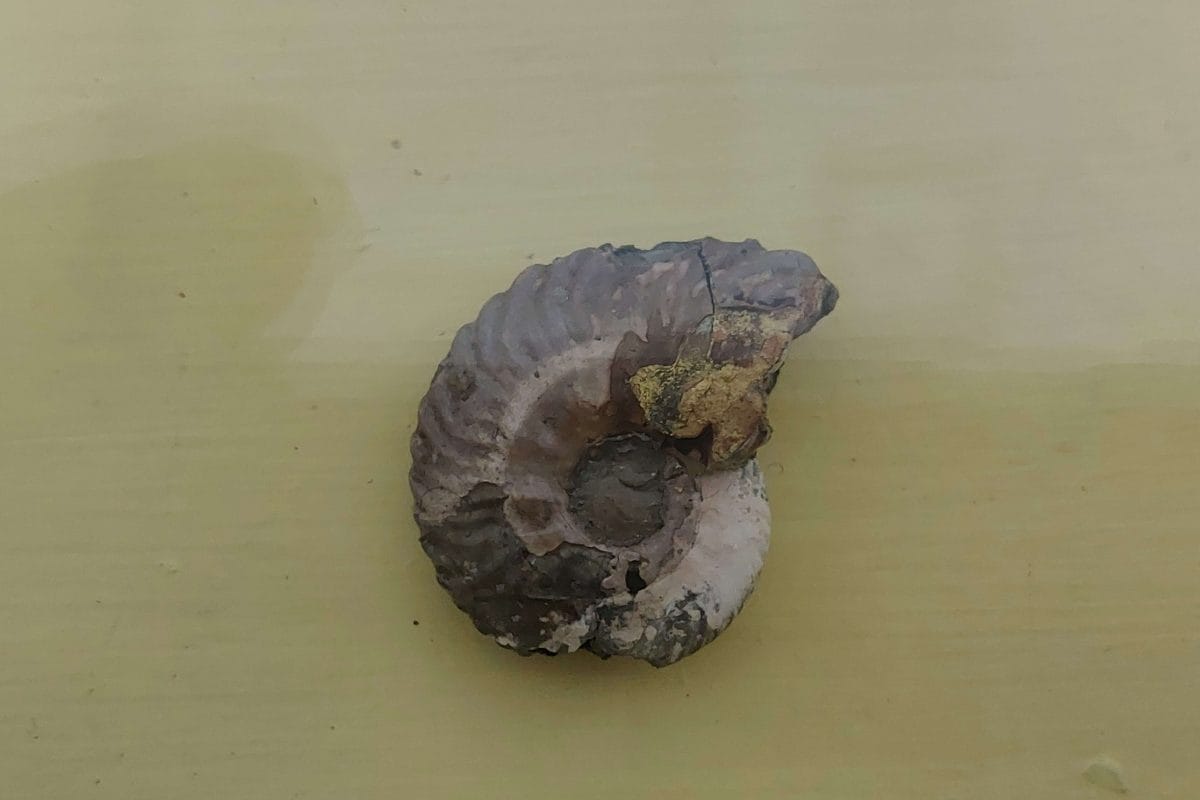The Nature + Love project is a transformative endeavour aimed at inspiring a deeper understanding and appreciation for our shared world. As part of this, the museum is fully redisplaying its renowned Natural History Gallery.
Scheduled to reopen in 2026, the refurbished Gallery promises to captivate visitors with its rich collection of specimens. For this to happen however, the gallery must be emptied, and most specimens will be decanted to our off-site storage facility.
Beginning the project
In March 2024, a team of volunteers was assembled to assist with the decanting of the balcony. This area of the gallery showcases the British fossil collection.
Typically we are part of the Front of House team, but we joined the volunteer effort driven by our passion for museums and natural history. Alongside other brilliant volunteers and staff we’ve had the privilege of handling and carefully packing fossils, ensuring their safe transition to their new home. Some of these specimens will return to the newly redisplayed gallery, while others will find their place in storage.
By recording each fossil’s details, we have also contributed to the Museum’s comprehensive inventory.
Pyrite and Fossils
One significant aspect of our experience has been encountering pyrite decay first hand.
Pyrite, often known as “fool’s gold,” frequently occurs in sedimentary rock and fossils. It can become incorporated into bones, shells, and plant fossils during the fossilisation process.


Pyrite can be a blessing and a curse. While its metallic lustre looks amazing, its unstable form can lead to pyrite decay (or pyrite disease). This is a destructive oxidation process that affects fossils causing them to disintegrate.
Our British fossil collection has been particularly affected. This is because many of our specimens were formed in the east and south east of the UK. These are regions with Gault Clay (Cretaceous Era) and Oxford Clay (Jurassic Era) which contain iron oxides that contribute to the development of this phenomenon.
These specimens demand special attention. Curators monitor humidity, acidity, and exposure to prevent further deterioration.
Recognising and addressing this issue is crucial for preserving our invaluable collection. This is especially the case as pyrite decay can spread throughout a collection.
How to identify Pyrite Decay (what we’ve learned)
Visual Indicators
- Colour Changes: Look for a change in the colour of the pyrite from a metallic gold to a dull, powdery white, yellow, or brown. This is a sign that oxidation has occurred.
- Surface Texture: Check for a powdery residue or crust forming on the surface of the fossil. This can be a byproduct of the decayed pyrite.
- Cracking and Flaking: Observe any cracking, flaking, or spalling (small pieces breaking off) of the fossil. Pyrite decay can cause the fossil to become brittle and break apart.
Chemical Indicators
- Sulphur Smell: In some cases, pyrite decay can produce a faint sulphurous smell, like rotten eggs, due to the release of sulphur compounds.
- pH Testing: Use pH strips to test for acidity around the fossil. Pyrite decay often produces sulfuric acid, which can lower the pH of the surrounding area.
Working closely with the specimens, I have gained a deep appreciation for their impressive details, which are even more striking up close. I am enormously proud to take part in this project that will help preserve a world-renowned collection for our future generations to enjoy.
One of the things I enjoyed most with this process was the handling of the fossils, realising just how many fascinating fossils there are in our collections and recognising familiar place names where they are from (even from areas of South East London). It has been a privilege to be a small part of the Nature + Love project - I’m looking forward to seeing the results of the project in 2026.
Last thoughts
1477 fossils later and we have come to the end of the fossil decant project and the Natural History Gallery balcony is empty of fossils for the time being. As Front of House staff accustomed to public interactions, delving into the behind-the-scenes work has been eye-opening.
Learning about the decanting process, handling fossils, and exploring collections management software Mimsy has enriched our understanding of both collections in general and of the Horniman’s natural history collections.
Holding a Megalodon’s tooth or a sea urchin fossil—albeit with gloves—has been a unique experience.
We are very excited for the gallery’s reopening and will always feel proud of our role in safeguarding these treasures for future generations.
In the meantime, we recommend you visit the Natural History Pop-Up in The Studio where you can find a full display of fossils amongst other unique specimens in the Horniman’s Natural History collection.
The Nature + Love project is made possible with The National Lottery Heritage Fund, thanks to National Lottery players.


